-
Executive Summary
-
Market Dynamics
-
Market Growth Factors 11
- Combination of Computed Tomography with 3D X-ray Microscopy 11
- Rising Focus on Nanotechnology and Regenerative Medicine 12
-
Market Challenges 12
- Complex 3D Structure and High-Cost Maintenance of Microscopy Devices 12
-
Market Opportunities 13
- 3D High-Resolution X-ray Microscopy on Material Characterization 13
-
Supply Chain Analysis 14
-
Porter’s Five Forces Analysis 15
-
High-resolution 3D X-ray Microscopy Market, By Type
-
Introduction 16
-
Sub-Segment 17
- Sub-Micron XRM 17
- Nanoscale XRM 17
-
High-resolution 3D X-ray Microscopy Market, By Application
-
Introduction 18
-
Sub-Segment 19
- Advanced Package Development 19
- Mineralogy Discrimination 19
- Failure Analysis 20
- Surface Measurements 20
- Others 20
-
High-resolution 3D X-ray Microscopy Market, By End-User
-
Introduction 21
-
Sub-Segment 22
- Oil & Gas 22
- Material Science 22
- Semiconductor 23
- Metrology 23
- Lifescience 23
- Healthcare 23
- Others 24
-
Global High-resolution 3D X-ray Microscopy Market, By Region
-
Introduction 25
-
Market, By Regions 27
-
High-resolution 3D X-ray Microscopy Market, By Type
-
High-resolution 3D X-ray Microscopy Market, By Application
-
High-resolution 3D X-ray Microscopy Market, By End-User
-
North America 27
-
High-resolution 3D X-ray Microscopy Market, By Type
-
High-resolution 3D X-ray Microscopy Market, By Application
-
High-resolution 3D X-ray Microscopy Market, By End-User
-
U.S. 32
-
High-resolution 3D X-ray Microscopy Market, By Type
-
High-resolution 3D X-ray Microscopy Market, By Application
-
High-resolution 3D X-ray Microscopy Market, By End-User
-
Canada 34
-
High-resolution 3D X-ray Microscopy Market, By Type
-
High-resolution 3D X-ray Microscopy Market, By Application
-
High-resolution 3D X-ray Microscopy Market, By End-User
-
Mexico 35
-
High-resolution 3D X-ray Microscopy Market, By Type
-
High-resolution 3D X-ray Microscopy Market, By Application
-
High-resolution 3D X-ray Microscopy Market, By End-User
-
Europe 38
-
High-resolution 3D X-ray Microscopy Market, By Type
-
High-resolution 3D X-ray Microscopy Market, By Application
-
High-resolution 3D X-ray Microscopy Market, By End-User
-
U.K. 43
-
High-resolution 3D X-ray Microscopy Market, By Type
-
High-resolution 3D X-ray Microscopy Market, By Application
-
High-resolution 3D X-ray Microscopy Market, By End-User
-
Germany 45
-
High-resolution 3D X-ray Microscopy Market, By Type
-
High-resolution 3D X-ray Microscopy Market, By Application
-
High-resolution 3D X-ray Microscopy Market, By End-User
-
France 47
-
High-resolution 3D X-ray Microscopy Market, By Type
-
High-resolution 3D X-ray Microscopy Market, By Application
-
High-resolution 3D X-ray Microscopy Market, By End-User
-
Rest of Europe 49
-
High-resolution 3D X-ray Microscopy Market, By Type
-
High-resolution 3D X-ray Microscopy Market, By Application
-
High-resolution 3D X-ray Microscopy Market, By End-User
-
Asia-Pacific 51
-
High-resolution 3D X-ray Microscopy Market, By Type
-
High-resolution 3D X-ray Microscopy Market, By Application
-
High-resolution 3D X-ray Microscopy Market, By End-User
-
China 56
-
High-resolution 3D X-ray Microscopy Market, By Type
-
High-resolution 3D X-ray Microscopy Market, By Application
-
High-resolution 3D X-ray Microscopy Market, By End-User
-
South Korea 58
-
High-resolution 3D X-ray Microscopy Market, By Type
-
High-resolution 3D X-ray Microscopy Market, By Application
-
High-resolution 3D X-ray Microscopy Market, By End-User
-
Japan 60
-
High-resolution 3D X-ray Microscopy Market, By Type
-
High-resolution 3D X-ray Microscopy Market, By Application
-
High-resolution 3D X-ray Microscopy Market, By End-User
-
India 62
-
High-resolution 3D X-ray Microscopy Market, By Type
-
High-resolution 3D X-ray Microscopy Market, By Application
-
High-resolution 3D X-ray Microscopy Market, By End-User
-
Rest of Asia-Pacific 64
-
High-resolution 3D X-ray Microscopy Market, By Type
-
High-resolution 3D X-ray Microscopy Market, By Application
-
High-resolution 3D X-ray Microscopy Market, By End-User
-
Rest of the World (RoW) 66
-
High-resolution 3D X-ray Microscopy Market, By Type
-
High-resolution 3D X-ray Microscopy Market, By Application
-
High-resolution 3D X-ray Microscopy Market, By End-User
-
The Middle East & Africa 71
-
High-resolution 3D X-ray Microscopy Market, By Type
-
High-resolution 3D X-ray Microscopy Market, By Application
-
High-resolution 3D X-ray Microscopy Market, By End-User
-
Latin America 73
-
High-resolution 3D X-ray Microscopy Market, By Type
-
High-resolution 3D X-ray Microscopy Market, By Application
-
High-resolution 3D X-ray Microscopy Market, By End-User
-
Competitive Landscape
-
Introduction 75
-
Market Share Analysis 75
-
Company Profiles
-
Zeiss 76
- Company Overview 76
- Product Portfolios 77
- Strategy 77
-
Rigaku Corporation 78
- Company Overview 78
- Product Portfolios 78
-
Bruker Corporation 79
- Company Overview 79
- Product Portfolios 80
- Strategy 80
-
Thermo Fisher Scientific Inc. 81
- Company Overview 81
- Product Portfolios 82
- Strategy 82
-
GE Measurement & Control Solutions. 83
- Company Overview 83
- Product Portfolios 84
- Strategy 84
-
National Resource for Automated Molecular Microscopy 85
- Company Overview 85
-
Phenom-World BV. 86
- Company Overview 86
- Product Portfolios 86
-
TESCAN 87
- Company Overview 87
- Product Portfolios 87
- Strategy 87
-
Matsusada Precision Inc. 87
- Company Overview 87
- Product Portfolios 88
-
Octopus Imaging Software 89
- Company Overview 89
- Product Portfolios 89
-
Appendix
-
Scope of the Study 90
- Research Objective 90
- Assumption 90
- Limitation 90
-
Market Structure 91
-
Research Methodologies
-
Research Process 92
-
Primary Research 93
-
Secondary Research 93
-
Market Size Estimation 93
-
Forecast Model 94
-
List of Tables
-
GLOBAL HIGH-RESOLUTION 3D X-RAY MICROSCOPY MARKET BY TYPE, 2020–2027 (USD MILLION) 17
-
GLOBAL HIGH-RESOLUTION 3D X-RAY MICROSCOPY MARKET, BY APPLICATION, 2020–2027 (USD MILLION) 19
-
GLOBAL HIGH-RESOLUTION 3D X-RAY MICROSCOPY MARKET, BY END USER, 2020–2027 (USD MILLION) 22
-
GLOBAL HIGH-RESOLUTION 3D X-RAY MICROSCOPY MARKET, 2020–2027 (USD MILLION) 26
-
NORTH AMERICA HIGH-RESOLUTION 3D X-RAY MICROSCOPY MARKET BY COUNTRY,2020–2027 (USD MILLION) 28
-
NORTH AMERICA HIGH-RESOLUTION 3D X-RAY MICROSCOPY MARKET BY TYPE, 2020–2027 (USD MILLION) 29
-
NORTH AMERICA HIGH-RESOLUTION 3D X-RAY MICROSCOPY MARKET BY APPLICATIONS, 2020–2027 (USD MILLION) 30
-
NORTH AMERICA HIGH-RESOLUTION 3D X-RAY MICROSCOPY MARKET BY END-USER, 2020–2027 (USD MILLION) 31
-
US HIGH-RESOLUTION 3D X-RAY MICROSCOPY MARKET, BY TYPE, 2020–2027 (USD MILLION) 32
-
US HIGH-RESOLUTION 3D X-RAY MICROSCOPY MARKET, BY APPLICATIONS, 2020–2027 (USD MILLION) 32
-
US HIGH-RESOLUTION 3D X-RAY MICROSCOPY MARKET, BY END-USER, 2020–2027 (USD MILLION) 33
-
CANADA HIGH-RESOLUTION 3D X-RAY MICROSCOPY MARKET, BY TYPE, 2020–2027 (USD MILLION) 34
-
CANADA HIGH-RESOLUTION 3D X-RAY MICROSCOPY MARKET, BY APPLICATIONS, 2020–2027 (USD MILLION) 34
-
CANADA HIGH-RESOLUTION 3D X-RAY MICROSCOPY MARKET, BY END-USER, 2020–2027 (USD MILLION) 35
-
MEXICO HIGH-RESOLUTION 3D X-RAY MICROSCOPY MARKET, BY TYPE, 2020–2027 (USD MILLION) 35
-
MEXICO HIGH-RESOLUTION 3D X-RAY MICROSCOPY MARKET, BY APPLICATIONS, 2020–2027 (USD MILLION) 36
-
MEXICO HIGH-RESOLUTION 3D X-RAY MICROSCOPY MARKET, BY END-USER, 2020–2027 (USD MILLION) 37
-
EUROPE HIGH-RESOLUTION 3D X-RAY MICROSCOPY MARKET BY COUNTRY, 2020–2027 (USD MILLION) 39
-
EUROPE HIGH-RESOLUTION 3D X-RAY MICROSCOPY MARKET BY TYPE, 2020–2027 (USD MILLION) 40
-
EUROPE HIGH-RESOLUTION 3D X-RAY MICROSCOPY MARKET BY APPLICATIONS, 2020–2027 (USD MILLION) 41
-
EUROPE HIGH-RESOLUTION 3D X-RAY MICROSCOPY MARKET BY END-USER, 2020–2027 (USD MILLION) 42
-
UK HIGH-RESOLUTION 3D X-RAY MICROSCOPY MARKET, BY TYPE, 2020–2027 (USD MILLION) 43
-
UK HIGH-RESOLUTION 3D X-RAY MICROSCOPY MARKET, BY APPLICATIONS, 2020–2027 (USD MILLION) 43
-
UK HIGH-RESOLUTION 3D X-RAY MICROSCOPY MARKET, BY END-USER, 2020–2027 (USD MILLION) 44
-
GERMANY HIGH-RESOLUTION 3D X-RAY MICROSCOPY MARKET, BY TYPE, 2020–2027 (USD MILLION) 45
-
GERMANY HIGH-RESOLUTION 3D X-RAY MICROSCOPY MARKET, BY APPLICATIONS, 2020–2027 (USD MILLION) 45
-
GERMANY HIGH-RESOLUTION 3D X-RAY MICROSCOPY MARKET, BY END-USER, 2020–2027 (USD MILLION) 46
-
FRANCE HIGH-RESOLUTION 3D X-RAY MICROSCOPY MARKET, BY TYPE, 2020–2027 (USD MILLION) 47
-
FRANCE HIGH-RESOLUTION 3D X-RAY MICROSCOPY MARKET, BY APPLICATIONS, 2020–2027 (USD MILLION) 47
-
FRANCE HIGH-RESOLUTION 3D X-RAY MICROSCOPY MARKET, BY END-USER, 2020–2027 (USD MILLION) 48
-
REST OF EUROPE HIGH-RESOLUTION 3D X-RAY MICROSCOPY MARKET, BY TYPE, 2020–2027 (USD MILLION) 49
-
REST OF EUROPE HIGH-RESOLUTION 3D X-RAY MICROSCOPY MARKET, BY APPLICATIONS, 2020–2027 (USD MILLION) 49
-
REST OF EUROPE HIGH-RESOLUTION 3D X-RAY MICROSCOPY MARKET, BY END-USER, 2020–2027 (USD MILLION) 50
-
ASIA-PACIFIC HIGH-RESOLUTION 3D X-RAY MICROSCOPY MARKET BY COUNTRY, 2020–2027 (USD MILLION) 52
-
ASIA-PACIFIC HIGH-RESOLUTION 3D X-RAY MICROSCOPY MARKET BY TYPE, 2020–2027 (USD MILLION) 53
-
ASIA-PACIFIC HIGH-RESOLUTION 3D X-RAY MICROSCOPY MARKET BY APPLICATIONS, 2020–2027 (USD MILLION) 54
-
ASIA-PACIFIC HIGH-RESOLUTION 3D X-RAY MICROSCOPY MARKET BY END-USER, 2020–2027 (USD MILLION) 55
-
CHINA HIGH-RESOLUTION 3D X-RAY MICROSCOPY MARKET, BY TYPE, 2020–2027 (USD MILLION) 56
-
CHINA HIGH-RESOLUTION 3D X-RAY MICROSCOPY MARKET, BY APPLICATIONS, 2020–2027 (USD MILLION) 56
-
CHINA HIGH-RESOLUTION 3D X-RAY MICROSCOPY MARKET, BY END-USER, 2020–2027 (USD MILLION) 57
-
SOUTH KOREA HIGH-RESOLUTION 3D X-RAY MICROSCOPY MARKET, BY TYPE, 2020–2027 (USD MILLION) 58
-
SOUTH KOREA HIGH-RESOLUTION 3D X-RAY MICROSCOPY MARKET, BY APPLICATIONS, 2020–2027 (USD MILLION) 58
-
SOUTH KOREA HIGH-RESOLUTION 3D X-RAY MICROSCOPY MARKET, BY END-USER, 2020–2027 (USD MILLION) 59
-
JAPAN HIGH-RESOLUTION 3D X-RAY MICROSCOPY MARKET, BY TYPE, 2020–2027 (USD MILLION) 60
-
JAPAN HIGH-RESOLUTION 3D X-RAY MICROSCOPY MARKET, BY APPLICATIONS, 2020–2027 (USD MILLION) 60
-
JAPAN HIGH-RESOLUTION 3D X-RAY MICROSCOPY MARKET, BY END-USER, 2020–2027 (USD MILLION) 61
-
INDIA HIGH-RESOLUTION 3D X-RAY MICROSCOPY MARKET, BY TYPE, 2020–2027 (USD MILLION) 62
-
INDIA HIGH-RESOLUTION 3D X-RAY MICROSCOPY MARKET, BY APPLICATIONS, 2020–2027 (USD MILLION) 62
-
INDIA HIGH-RESOLUTION 3D X-RAY MICROSCOPY MARKET, BY END-USER, 2020–2027 (USD MILLION) 63
-
REST OF ASIA PACIFIC HIGH-RESOLUTION 3D X-RAY MICROSCOPY MARKET, BY TYPE, 2020–2027 (USD MILLION) 64
-
REST OF ASIA PACIFIC HIGH-RESOLUTION 3D X-RAY MICROSCOPY MARKET, BY APPLICATIONS, 2020–2027 (USD MILLION) 64
-
REST OF ASIA PACIFIC HIGH-RESOLUTION 3D X-RAY MICROSCOPY MARKET, BY END-USER, 2020–2027 (USD MILLION) 65
-
REST OF THE WORLD (ROW) HIGH-RESOLUTION 3D X-RAY MICROSCOPY MARKET BY COUNTRY, 2020–2027 (USD MILLION) 67
-
REST OF THE WORLD (ROW) HIGH-RESOLUTION 3D X-RAY MICROSCOPY MARKET BY TYPE, 2020–2027 (USD MILLION) 68
-
REST OF THE WORLD (ROW) HIGH-RESOLUTION 3D X-RAY MICROSCOPY MARKET BY APPLICATIONS, 2020–2027 (USD MILLION) 69
-
REST OF THE WORLD (ROW) HIGH-RESOLUTION 3D X-RAY MICROSCOPY MARKET BY END-USER, 2020–2027 (USD MILLION) 70
-
THE MIDDLE EAST & AFRICA HIGH-RESOLUTION 3D X-RAY MICROSCOPY MARKET, BY TYPE, 2020–2027 (USD MILLION) 71
-
THE MIDDLE EAST & AFRICA HIGH-RESOLUTION 3D X-RAY MICROSCOPY MARKET, BY APPLICATIONS, 2020–2027 (USD MILLION) 71
-
THE MIDDLE EAST & AFRICA HIGH-RESOLUTION 3D X-RAY MICROSCOPY MARKET, BY END-USER, 2020–2027 (USD MILLION) 72
-
LATIN AMERICA HIGH-RESOLUTION 3D X-RAY MICROSCOPY MARKET, BY TYPE, 2020–2027 (USD MILLION) 73
-
LATIN AMERICA HIGH-RESOLUTION 3D X-RAY MICROSCOPY MARKET, BY APPLICATIONS, 2020–2027 (USD MILLION) 73
-
THE MIDDLE EAST & AFRICA HIGH-RESOLUTION 3D X-RAY MICROSCOPY MARKET, BY END-USER, 2020–2027 (USD MILLION) 74
-
List of Figures
-
GLOBAL HIGH-RESOLUTION 3D X-RAY MICROSCOPY MARKET: DRIVERS CHALLENGES & OPPORTUNITIES 11
-
HIGH-RESOLUTION 3D X-RAY MICROSCOPY MARKET: SUPPLY CHAIN 14
-
GLOBAL HIGH-RESOLUTION 3D X-RAY MICROSCOPY MARKET: PORTER’S FIVE FORCES ANALYSIS 15
-
GLOBAL HIGH-RESOLUTION 3D X-RAY MICROSCOPY MARKET BY TYPE, 2020–2027 (USD MILLION) 16
-
GLOBAL HIGH-RESOLUTION 3D X-RAY MICROSCOPY MARKET, BY APPLICATION, 2020–2027 (USD MILLION) 18
-
GLOBAL HIGH-RESOLUTION 3D X-RAY MICROSCOPY MARKET, BY END-USER, 2020–2027 (USD MILLION) 21
-
GLOBAL HIGH-RESOLUTION 3D X-RAY MICROSCOPY MARKET, BY REGION, 2020–2027 (USD MILLION) 26
-
NORTH AMERICA HIGH-RESOLUTION 3D X-RAY MICROSCOPY MARKET BY COUNTRY, 2020–2027 (USD MILLION) 28
-
NORTH AMERICA HIGH-RESOLUTION 3D X-RAY MICROSCOPY MARKET BY TYPE, 2020–2027 (USD MILLION) 29
-
NORTH AMERICA HIGH-RESOLUTION 3D X-RAY MICROSCOPY MARKET BY APPLICATIONS, 2020–2027 (USD MILLION) 30
-
NORTH AMERICA HIGH-RESOLUTION 3D X-RAY MICROSCOPY MARKET BY END-USER, 2020–2027 (USD MILLION) 31
-
EUROPE HIGH-RESOLUTION 3D X-RAY MICROSCOPY MARKET BY COUNTRY, 2020–2027 (USD MILLION) 39
-
EUROPE HIGH-RESOLUTION 3D X-RAY MICROSCOPY MARKET BY TYPE, 2020–2027 (USD MILLION) 40
-
EUROPE HIGH-RESOLUTION 3D X-RAY MICROSCOPY MARKET BY APPLICATIONS, 2020–2027 (USD MILLION) 41
-
EUROPE HIGH-RESOLUTION 3D X-RAY MICROSCOPY MARKET BY END-USER, 2020–2027 (USD MILLION) 42
-
ASIA PACIFIC HIGH-RESOLUTION 3D X-RAY MICROSCOPY MARKET BY COUNTRY, 2020–2027 (USD MILLION) 52
-
ASIA PACIFIC HIGH-RESOLUTION 3D X-RAY MICROSCOPY MARKET BY TYPE, 2020–2027 (USD MILLION) 53
-
ASIA PACIFIC HIGH-RESOLUTION 3D X-RAY MICROSCOPY MARKET BY APPLICATIONS, 2020–2027 (USD MILLION) 54
-
ASIA PACIFIC HIGH-RESOLUTION 3D X-RAY MICROSCOPY MARKET BY END-USER, 2020–2027 (USD MILLION) 55
-
REST OF THE WORLD (ROW) HIGH-RESOLUTION 3D X-RAY MICROSCOPY MARKET BY COUNTRY, 2020–2027 (USD MILLION) 66
-
REST OF THE WORLD (ROW) HIGH-RESOLUTION 3D X-RAY MICROSCOPY MARKET BY TYPE, 2020–2027 (USD MILLION) 67
-
REST OF THE WORLD (ROW) HIGH-RESOLUTION 3D X-RAY MICROSCOPY MARKET BY APPLICATIONS, 2020–2027 (USD MILLION) 68
-
REST OF THE WORLD (ROW) HIGH-RESOLUTION 3D X-RAY MICROSCOPY MARKET BY END-USER, 2020–2027 (USD MILLION) 69
-
GLOBAL HIGH-RESOLUTION 3D X-RAY MICROSCOPY KEY PLAYERS MARKET SHARE, 2020 (%) 75
-
GLOBAL HIGH-RESOLUTION 3D X-RAY MICROSCOPY MARKET STRUCTURE 91
-
MRFR RESEARCH PROCESS 92
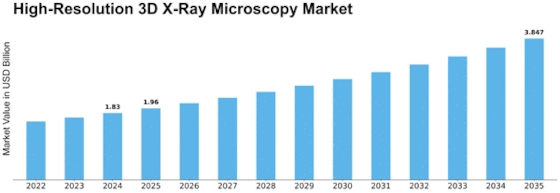

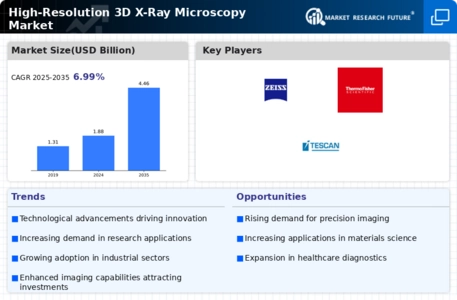
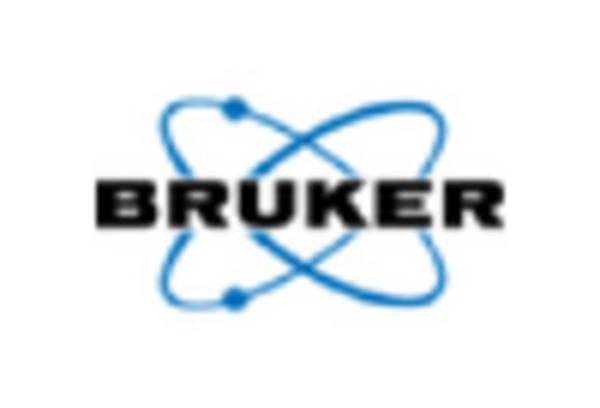
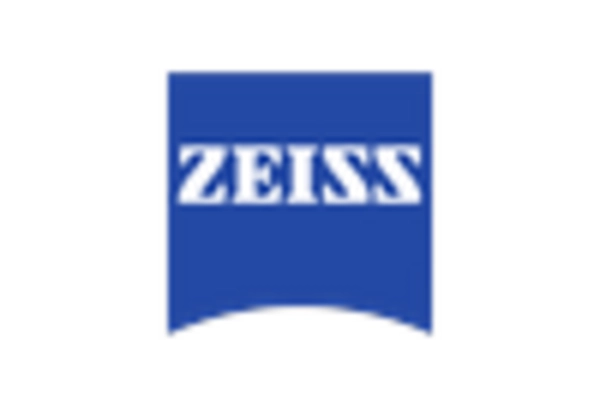
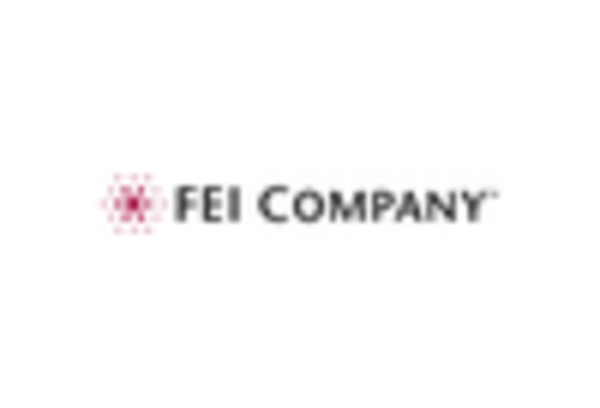
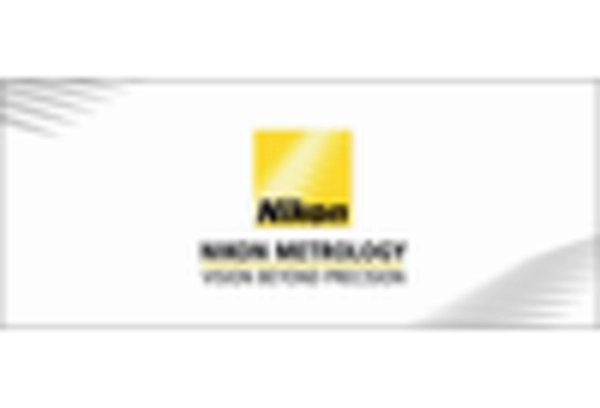
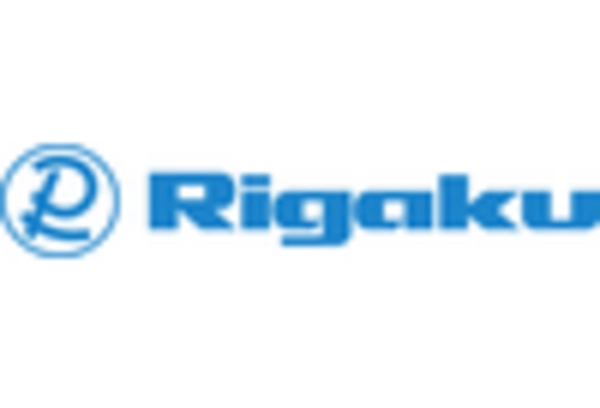
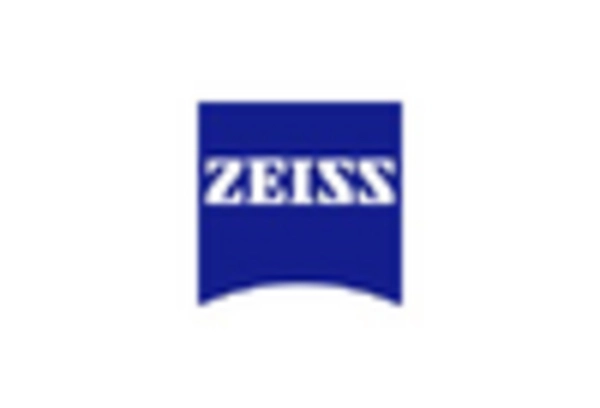









Leave a Comment